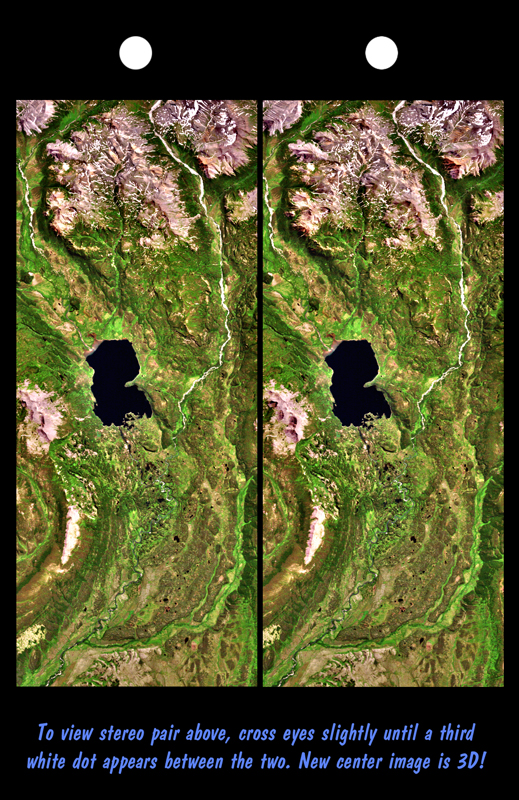Before I get criticized for using the word hallucination, I’d like to point out that illusion and hallucination are different, but they share a bit in common. The first (illusion) meaning you perceive something the wrong way, and the latter meaning you have a vision of something without any sightly cause to promote it (a green ghost from a blank white wall). I’ll also point out that a hallucination will probably have some visual stimulus that may influence what exactly you hallucinate. Even when eyes are closed they still perceive darkness. If outside on a sunny day with your eyes shut, you can still see light reflecting on your eyelids, making a lesser darkness than eyes closed in the dark. It is my opinion that illusions are subtle differences that come from undecipherable stimuli, and more imaginative illusions are deemed hallucinations in the presence of more subtle things or atmosphere.
Foreword: None of these require 3D glasses (the Red/Blue shades for Anaglyph images)
Begin the Tripping
Autostereograms are the common single picture optical illusions where you start close up and cross-eyed and move back and start to see depth. A name often associated with this is “Magic Eye” although they don’t own this technique. Wikipedia has a nifty animated autostereogram that you need to try. The canvas moves as well as the 3-D image. I don’t know if it’s just me, but I was able to capture the illusion in under 10 seconds. If you are having trouble, give the still picture a try. If you are struggling, take a break so you don’t hurt your eyes or get a headache.
The next eye-bender was common in older times with the use of a stereoscope, but is possible with the naked eye. It’s 3D-inverted Stereoscopic vision that takes two separate images that are positioned horizontally. It helps to have some guiding points and to position yourself a little further than normal viewing distance (over 12 inches from the screen). Focus your gaze on a finger about halfway between your line of sight and the image. Slowly shift your finger forward and backwards to align your viewing angle. Some instructions and examples can be found here, but the lesson might be a bit confusing and hard to master. Expect to waste over 10 minutes at the least trying to figure this out. The images don’t pop right at you but they create a single image from the two, and the outer images are a peripheral blur. A nice vivid stereo pair of Lake Palanskoye might be a good combo to start with… (Short directions below picture as well)

Use your finger to look at just below the white dots until the 4 dots start merging into three. Once the center dot becomes sharper try to focus on the surrounding center picture. Very slowly, try to remove your finger. Sometimes you will lose concentration and have to retry, but try to recall your position of your finger and eye distance. This stereoscopy pair is definitely noticeable once you have it with the pinkish brown heights that really pop.
For the same principle, but in motion picture, try this. Try it fullscreen and scoot back a bit more than you did before.
Besides the crosseyed 3D view, there is its opposite, the parallel view which fixates beyond the image instead of crossing over. At least for me, it is a ton easier once you learn the cross-eyed method. It’s similar to autostereograms in that you start close up, but you are trying to look past the actual depth. It then becomes like the inverted stereoscopy as you join the middle image of the three as shown here. It works better without glasses if possible.
Once you’ve mastered the Three-dimensional house in the previous link, try to do so with the normal stereoscopic video. It probably won’t work full screen unless you resort to look cross-eye (hence the wrong eyes see frames the other eyes should be seeing).
Here’s a somewhat lo-fi and strange performance that should be easy enough.
This a bit more active with fast moving cars, but some of the special effects make it harder to stay focused.
This last video is probably the best of the parallel stereogram I could find.






